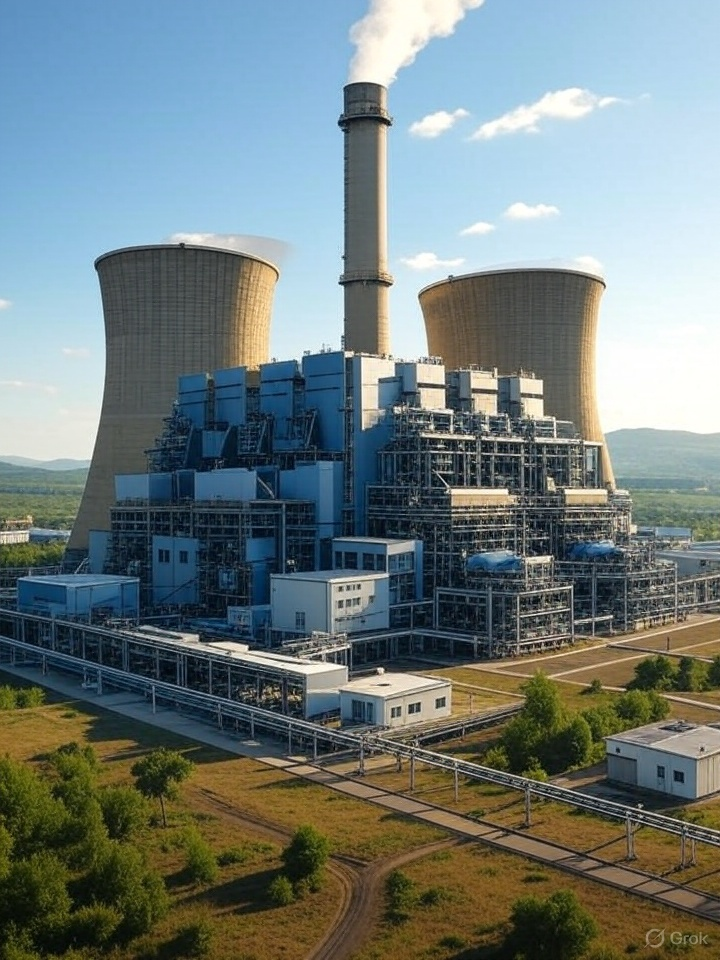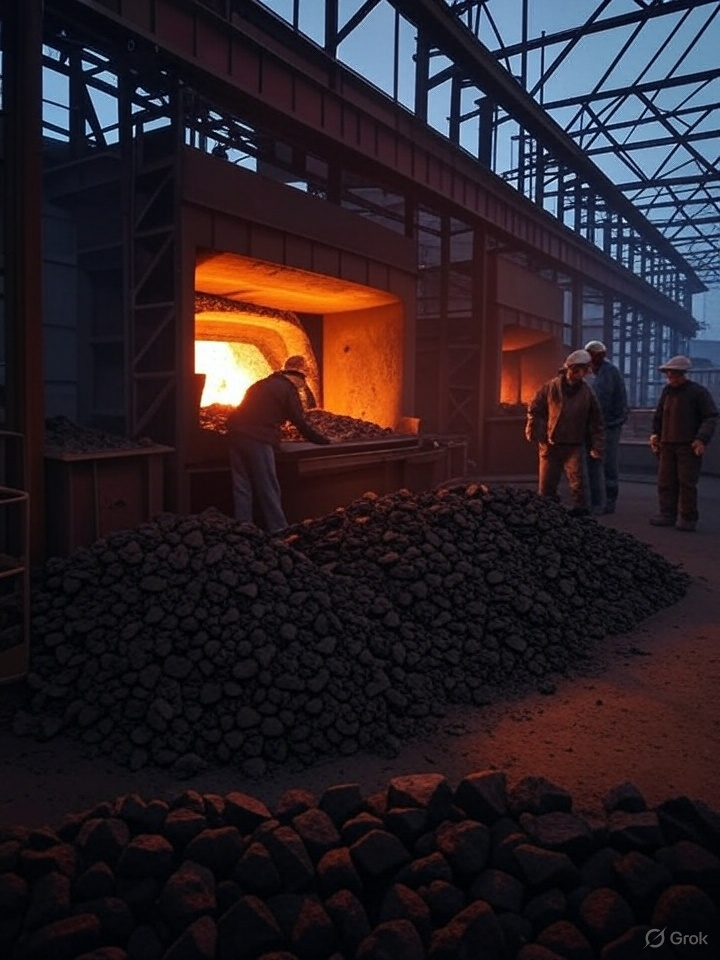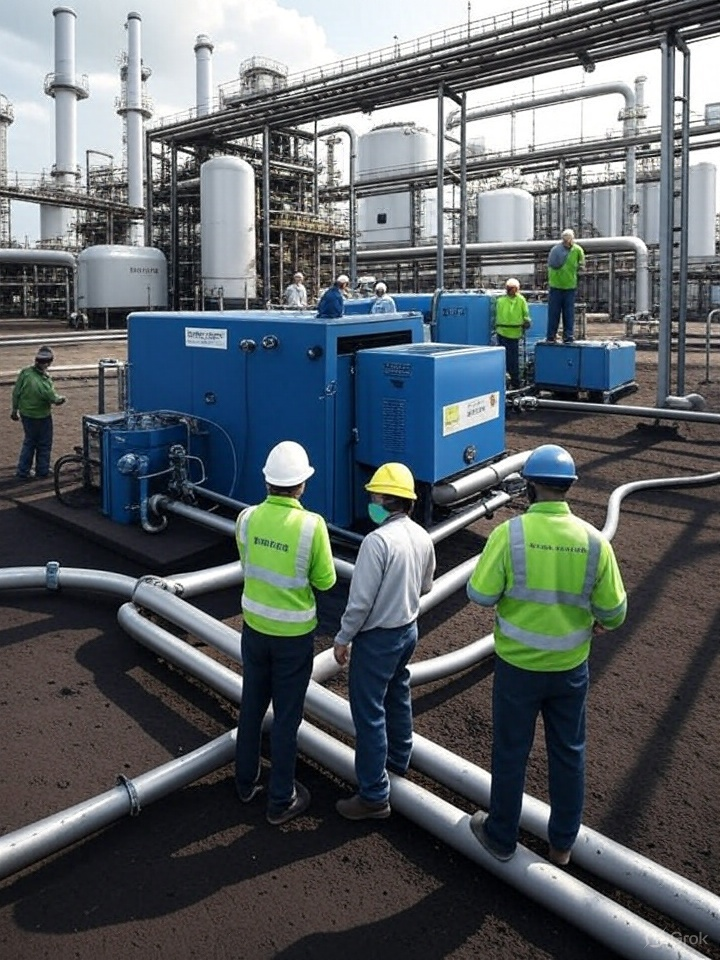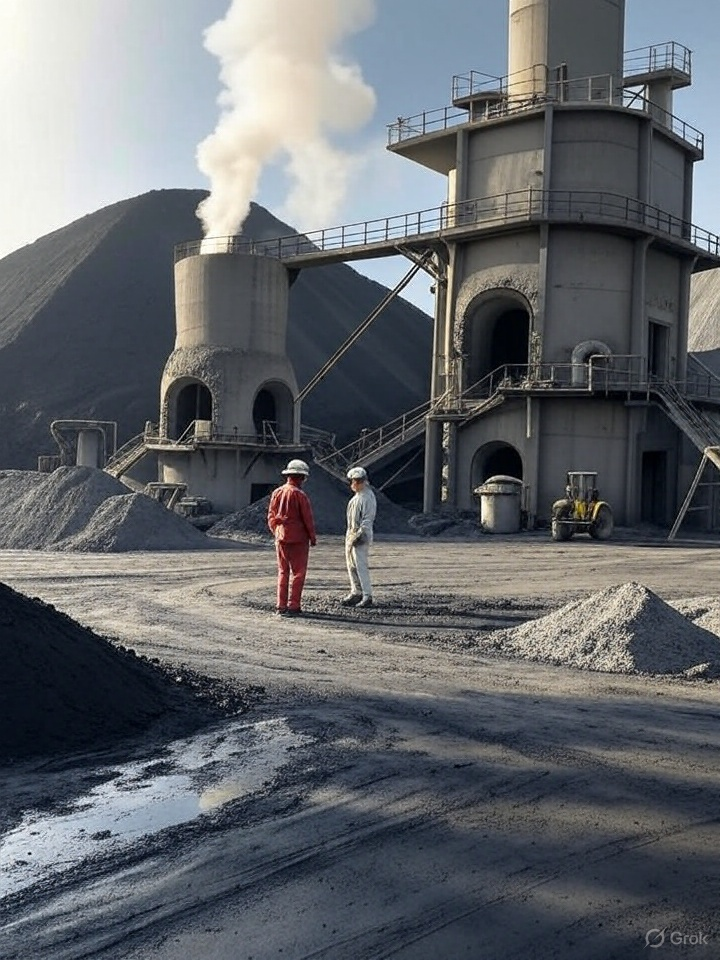🔥 Industrial Applications of Coal
Coal is far more than a fuel source—it's a multi-functional industrial material that supports diverse sectors of the global economy. From energy production to chemical synthesis, metallurgy, construction, and even carbon-based materials, coal's industrial reach is vast and evolving.
⚙️ 1. Power Generation (Thermal Energy)
Coal remains one of the most dominant sources of electricity worldwide.
- Thermal power plants burn coal to produce steam, which drives turbines and generates electricity.
- Both pulverized coal systems and fluidized bed combustion methods are widely used.
- In many developing countries, coal is still the backbone of the national grid.
⛽ Type Used: Mostly bituminous and sub-bituminous coal.
🏭 2. Steel and Metallurgy Industry
Coal is essential in the production of steel, one of the most coal-intensive industries globally.
- Coking coal (also called metallurgical coal) is converted into coke, which acts as a reducing agent in blast furnaces to extract iron from iron ore.
- It also provides thermal energy for high-temperature processing.
- Coke has high carbon content and low impurities, making it ideal for ferrous metallurgy.
⛏️ Type Used: Coking coal / Metallurgical coal
🧪 3. Coal-to-Chemicals and Synthetic Fuels
Coal is a base material for the production of various chemicals and fuels through processes such as gasification and liquefaction.
Key outputs include:
- Syngas (CO + H₂) – used to manufacture ammonia, methanol, and synthetic fuels.
- Coal tar – yields benzene, toluene, phenol, naphthalene, and other industrial solvents and resins.
- Activated carbon – derived from coal for filtration and purification.
⚗️ Sectors involved: Petrochemical, plastic, pesticide, and pharmaceutical industries.
 🧱 4. Cement and Construction Industry
🧱 4. Cement and Construction Industry
Coal is burned in cement kilns to generate the high temperatures required (up to 1450°C) to form clinker, the precursor to cement.
- Fly ash, a byproduct of coal combustion, is also used as a pozzolanic additive in concrete to enhance strength and durability.
- Bottom ash can be used in road construction and brick manufacturing.
🏗️ Outcome: Improved building materials and reduced raw material costs.
🖤 5. Carbon and Graphite Materials
Coal derivatives are processed to make:
- Carbon black – used in rubber products, especially tires.
- Graphite electrodes – essential for electric arc furnaces in steel recycling.
- Recarburizers – carbon additives used in casting and foundries.
These products serve automotive, electronics, and industrial tooling industries.
🧼 6. Domestic and Industrial Heating
In many countries, coal is still widely used for:
- Domestic heating in stoves and boilers.
- District heating systems in colder regions.
- Industrial furnaces for ceramics, glass, lime, and refractory bricks.
While alternatives are growing, coal's high calorific value makes it a reliable heat source.
🌍 7. Activated Carbon & Filtration
Certain coals (especially lignite and bituminous) are processed into activated carbon, which is used for:
- Water purification (municipal and industrial)
- Air filtration systems
- Gold extraction in mining (CIP/CIL processes)
- Gas masks and medical filters
♻️ Benefit: Environmental cleanup and health protection.
🚂 8. Transportation History & Heritage Use
Though largely replaced by diesel and electric, coal-powered locomotives and steamships were historically foundational to the transportation revolution—and are still used in tourist heritage industries today.
🪨 9. Other Specialized Uses
- Coal briquettes for cleaner residential burning.
- Coal-derived pigments for paints and coatings.
- Coal gas (town gas) – historically used for lighting and cooking before natural gas.
- Soil conditioning and mine land reclamation using processed coal residues.

⚠️ Environmental Considerations
Despite its wide utility, coal is under scrutiny due to:
- Greenhouse gas emissions
- Particulate and SO₂ pollution
- Land degradation and water use
This has led to rising investments in clean coal technologies, carbon capture, and renewable alternatives.
✅ Conclusion
Coal has been—and still is—a cornerstone of industrial civilization. Its applications extend beyond power, fueling some of the most critical sectors of global manufacturing and development. While the transition toward cleaner energy is underway, coal's industrial role remains complex, multi-layered, and deeply embedded in global infrastructure.
